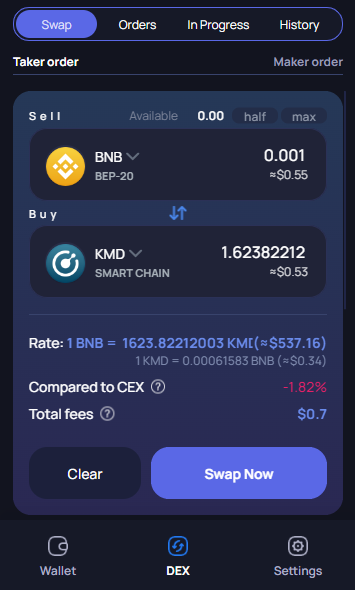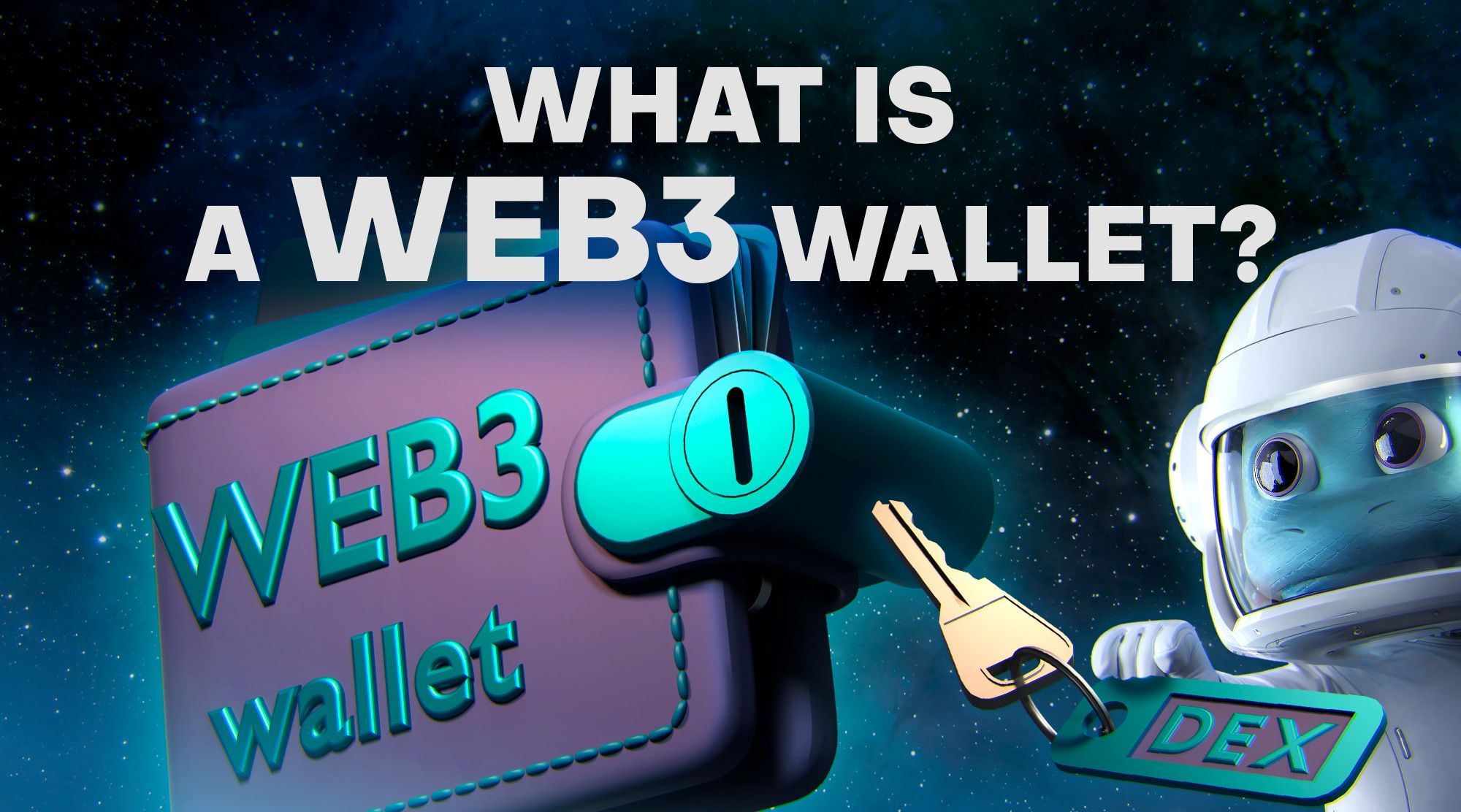In the rapidly evolving landscape of the internet, the emergence of Web3 technologies promises a decentralized and democratized digital future.
At the heart of this transformation lies the concept of Web3 wallets, which serve as gateways to the decentralized web.
In this article, we delve into the intricacies of Web3 wallets, exploring their evolution, features, types, functionalities, advantages, and potential risks.
What Is a Web3 Wallet?
A Web3 wallet, also known as a decentralized wallet or blockchain wallet, is a digital tool that allows users to securely store, manage, and interact with their cryptocurrencies, digital assets, and decentralized applications (dApps) on the blockchain.
Unlike traditional wallets, which are centralized and controlled by third parties such as banks or financial institutions, Web3 wallets empower users with full control over their funds and data, in alignment with the principles of decentralization and autonomy.
Discussing the Role of Web3 Wallets in The Web3 Ecosystem
Web3 wallets play a pivotal role in the Web3 ecosystem by enabling individuals to participate in decentralized finance (DeFi), non-fungible tokens (NFTs), decentralized autonomous organizations (DAOs), and other emerging blockchain-based applications.
These wallets act as the interface between users and the decentralized web, facilitating secure transactions, asset management, and interaction with dApps without relying on intermediaries.
Exploring the Features of Web3 Wallets
Web3 wallets come equipped with a range of features designed to enhance security, usability, and interoperability. These features may include:
- Private Key Management: Users are provided with a private key, a cryptographic string that grants access to their wallet and assets. Secure storage and management of this key are paramount to prevent unauthorized access.
- Multi-Currency Support: Web3 wallets support a variety of cryptocurrencies and tokens, allowing users to manage diverse portfolios from a single interface.
- dApp Integration: Seamless integration with decentralized applications enables users to interact with DeFi protocols, NFT marketplaces, and other blockchain-based services directly from their wallets.
- Cross-Platform Accessibility: Web3 wallets are accessible across multiple devices and platforms, including web browsers, mobile devices, desktop computers, and hardware devices, providing flexibility and convenience to users.
The Evolution of Web3 Wallets
The development of Web3 wallets has undergone a remarkable evolution, driven by technological advancements and user demands for increased security and usability.
In contrast to traditional wallets, which rely on centralized servers and custodial services, Web3 wallets leverage blockchain technology to ensure trustless and censorship-resistant transactions.
Web3 wallets have evolved from rudimentary command-line interfaces to user-friendly applications with intuitive graphical interfaces.
Early iterations, such as Bitcoin Core and Ethereum's Mist wallet, laid the foundation for the development of more sophisticated wallets like Komodo Wallet, MetaMask, Trust Wallet, and Trezor.
Exploring the Difference Between Traditional and Digital Wallets
Traditional wallets, such as bank accounts and payment platforms, are centralized and rely on intermediaries to facilitate transactions and maintain account balances.
In contrast, Web3 wallets are digital asset wallets that operate on decentralized networks, where transactions are validated by a distributed network of nodes, eliminating the need for intermediaries and reducing the risk of censorship or fraud.
What are the Types of Web3 Wallets?
Web3 wallets come in various forms to cater to the diverse needs and preferences of users. The four primary types of Web3 wallets are:
Browser-based Wallets: These wallets are browser extensions or web applications that allow users to access their funds and interact with dApps directly from their web browsers. Examples include MetaMask and Brave Wallet.
Mobile Wallets: Mobile wallets are smartphone applications that enable users to manage their cryptocurrencies and dApps on the go. Popular mobile wallets include Trust Wallet and Coinbase Wallet.
Hardware Wallets: Hardware wallets are physical devices that store users' private keys offline, providing an extra layer of security against online threats. Ledger Nano and Trezor are leading hardware wallet providers.
Desktop Wallets: Desktop wallets are software applications installed on users' computers, offering a more secure alternative to browser-based wallets. Exodus and Atomic Wallet are examples of desktop wallets.
How Do Web3 Wallets Function?
Web3 wallets function by leveraging blockchain technology and cryptographic principles to securely store and manage users' digital assets.
When a user creates a Web3 wallet, they are issued a private key, which is used to sign transactions and prove ownership of their assets.
When a transaction is initiated, it is broadcast to the blockchain network, where it is validated by nodes before being added to the blockchain.
Web3 wallets interact with dApps through a process known as wallet integration, where developers incorporate wallet functionalities into their applications using standardized protocols such as Web3.js and JSON-RPC. Users can then connect their wallets to dApps, granting them permission to access their funds and execute transactions on their behalf.

Advantages of Using Web3 Wallets
Web3 wallets offer several advantages over traditional wallets and centralized exchanges, including:
Enhanced Security: By eliminating single points of failure and placing control directly in the hands of users, Web3 wallets offer greater security against hacks, theft, and censorship.
Greater Control Over Assets: With Web3 wallets, users have full control over their funds and data, eliminating reliance on third parties and enabling self-custody of assets.
Interoperability Across Platforms: Web3 wallets are interoperable across multiple platforms and blockchains, allowing users to seamlessly transfer assets and interact with dApps regardless of their underlying protocols.
Potential Risks and Challenges
Despite their numerous benefits, Web3 wallets also pose certain risks and challenges that users should be aware of, including:
Security Concerns: Web3 wallets are susceptible to various security threats, including phishing attacks, malware infections, and vulnerabilities in smart contracts and dApps.
Best Practices for Safeguarding Assets
To mitigate these risks, users should adhere to best practices for securing their Web3 wallets, such as:
- Using Hardware Wallets: Storing large amounts of cryptocurrency in hardware wallets provides an additional layer of security against online threats.
- Enabling Two-Factor Authentication: Enabling two-factor authentication (2FA) adds an extra layer of security to protect against unauthorized access.
- Regularly Updating Software: Keeping Web3 wallet software up to date helps patch vulnerabilities and protect against emerging threats.
Final Thoughts on Web3 Wallets
Web3 wallets represent a significant advancement in the field of digital finance, offering users unprecedented control, security, and interoperability in managing their digital assets.
As the Web3 ecosystem continues to evolve, Web3 wallets will play an increasingly vital role in empowering individuals to participate in the decentralized economy of the future.
By understanding the features, functions, and risks associated with Web3 wallets, users can confidently embrace this transformative technology and unlock its full potential.
HODL and Trade Crypto with Komodo Wallet — A Market-Leading Web3 Wallet
Komodo Wallet is a non-custodial wallet, decentralized exchange, and crypto bridge that supports Bitcoin, Ethereum, Litecoin, Dogecoin, and numerous other cryptocurrencies.
